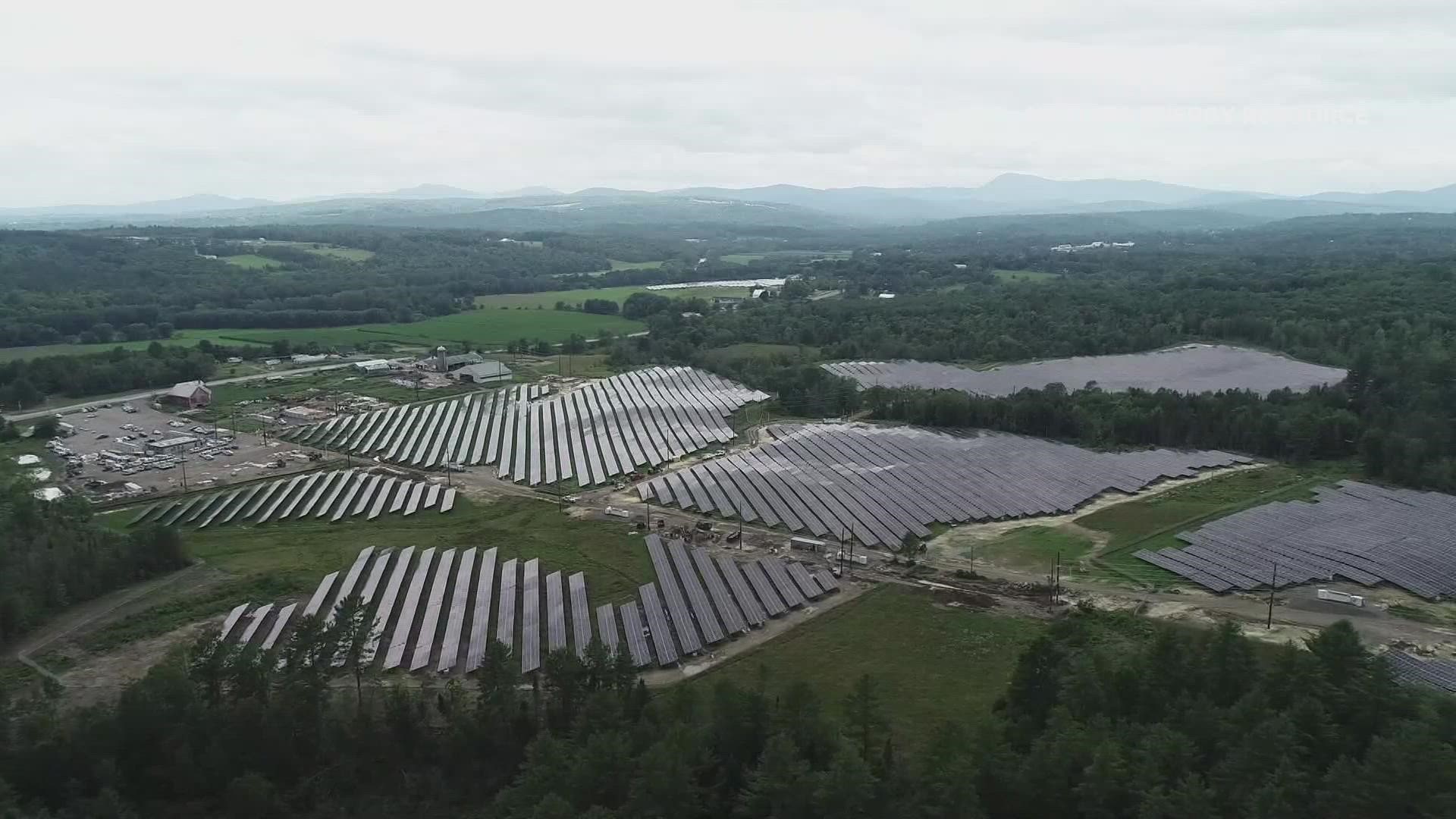AUGUSTA, Maine —
Balancing the demand for clean energy generated by solar farms and protecting habitats already threatened by climate change could be taken up by Maine lawmakers in January.
Conservation organizations, sportsmen, and agricultural and solar developers are working together as a coalition to come up with rules to minimize the environmental impact of the booming solar industry.
A little more than a year ago, one of New England's largest solar energy farms came online in Farmington.
The nearly 500-acre array, connects to the ISO New England grid, powering close to 17,000 New England homes annually. Rep. Scott Landry D-Farmington said fencing around the project eliminated a long-time habitat for deer.
"The deer kill in town is way up. We have so many deer because we have lost prime land," Landry said.
Landry is the House chair of the Joint Standing Committee on Inland Fisheries and Wildlife. He also sits on the Agriculture, Conservation, and Forestry committees. He supports clean energy but not at the expense of important habitats already in peril by climate change.
Landry, along with David Trahan, the executive director of the Sportsman's Alliance of Maine, is pushing for wildlife habitat to be taken into consideration as more solar projects break ground in Maine. So far this year, regulators have approved more than 30 applications, some requiring clearing large swaths of forest land.
"It is happening so fast it's like the wild wild west in Maine, and our laws are not keeping up with the amount of development," Trahan said.
Solar developers must follow state regulations to minimize potential damage to protected areas such as wetlands, streams, and vernal pools. Trahan and Landry support adding forests and farmland to the process as part of new legislation.
"We are not going to tell you, you can't put in solar. But if you are going to impact those critical areas, then there is going to be a mitigation process to compensate and conserve other lands," Trahan explained.
The proposal could also incentivize farmers and developers to build solar projects on land contaminated by PFAS. Industrial chemicals that don't easily break down have been linked to severe health problems. The past practice of spreading of PFAS tainted sludge as fertilizer has resulted in hundreds of acres of farm fields, especially in the Fairfield area, being unusable
"We need to take advantage of those lands that are not tillable and put clean energy there but we have to set up rules," Landry added.
A coalition of members of SAM, conservation groups, solar farm developers, and state developers plan on meeting in the near future to possibly hammer out the details of the bill. Jeremy Payne, is the Executive Director of the Maine Renewable Energy Association, a not-for-profit association of renewable energy producers, suppliers of goods and services to those producers, and other supporters of this industry. Payne told NEWS CENTER, Maine: "The solar industry is always willing to engage in discussions around siting and other considerations, and this effort is no different. However, it is important to remember that Maine-made solar is a clean, renewable source of electricity with the added benefit of being inflation-proof in terms of pricing. There are dozens of Maine companies actively working to build and grow this industry so it can continue to provide high-quality jobs, tens of millions of dollars of new taxable investment, and environmentally friendly electricity. I believe we all agree that solar projects must be appropriately sited and appropriately sized -- these projects should not go anywhere and everywhere. But the flip side of that is we also should not treat new solar projects as some environmentally unfriendly polluter that must mitigate their harmful impacts. Another important consideration is that adding policy priorities for future solar -- e.g. PFAS, gravel pits, landfills, etc. -- is that those choices often introduce added cost. It's not as though one can decide to build these projects on every capped landfill or pit and the development cost is identical to a so-called "greenfield" site nearby to grid infrastructure. Most often, developers choose their sites based on the lowest possible cost with the lowest possible environmental impact -- so if a policy were to be implemented that complicates that calculation then we can likely assume we will see higher costs for future solar farms."
If a bill is drafted over the next several weeks, it could be introduced in the upcoming legislative session in January. The coalition is expected to meet Friday at the Nature Conservancy in Brunswick. Rob Wood, the Nature Conservancy's Director of Government Relations and Climate Policy told NEWS CENTER, Maine:
"The Nature Conservancy is glad to be working with renewable energy developers, sportsmen, and other conservation partners to seek consensus on strategies to ensure rapid deployment of renewable energy while avoiding and mitigating impacts to Maine’s natural and working lands. We look forward to the conversation on Friday and to ongoing discussions about potential statutory changes as the legislative session gets underway."
Department of Environmental Protection regulators is also discussing whether to evaluate proposed solar farms if the development will impact habitats by restricting the movement of wildlife. Deputy Commissioner, told NEWS CENTER, Maine:
"Solar panel installation on PFAS-contaminated properties has already been highlighted by the DEP as a potential use for those sites while remediation strategies remain limited. The Department has introduced a concept for offering a streamlined permitting process under Site Law for solar development projects that are not proposed in locations identified as high-value wildlife habitats. We don't currently have a draft rule and are still discussing how those locations are determined with stakeholders."

